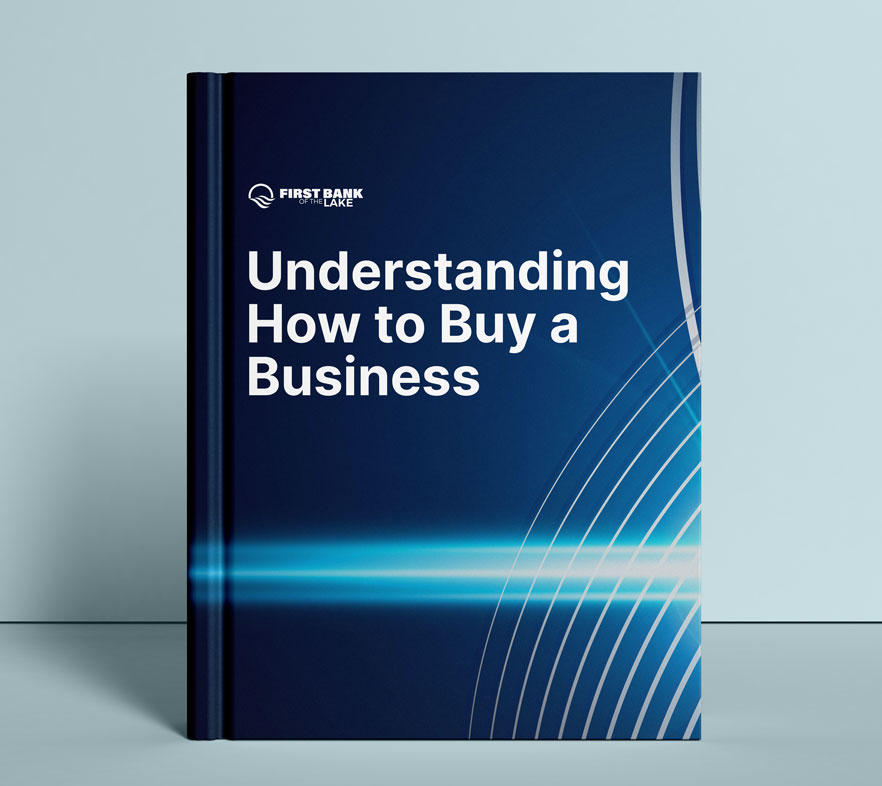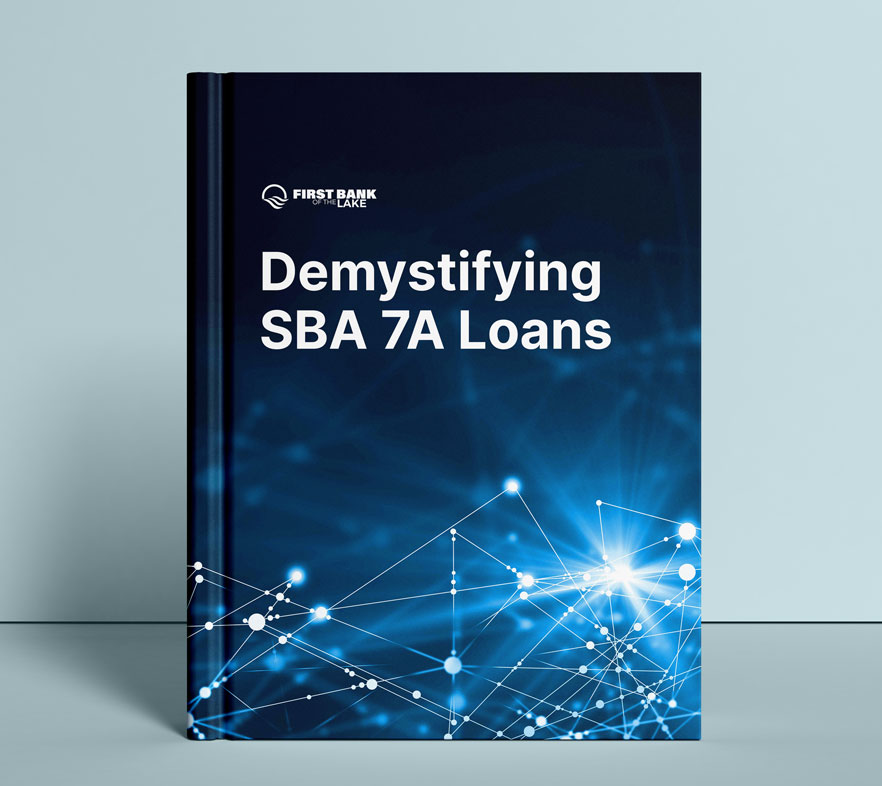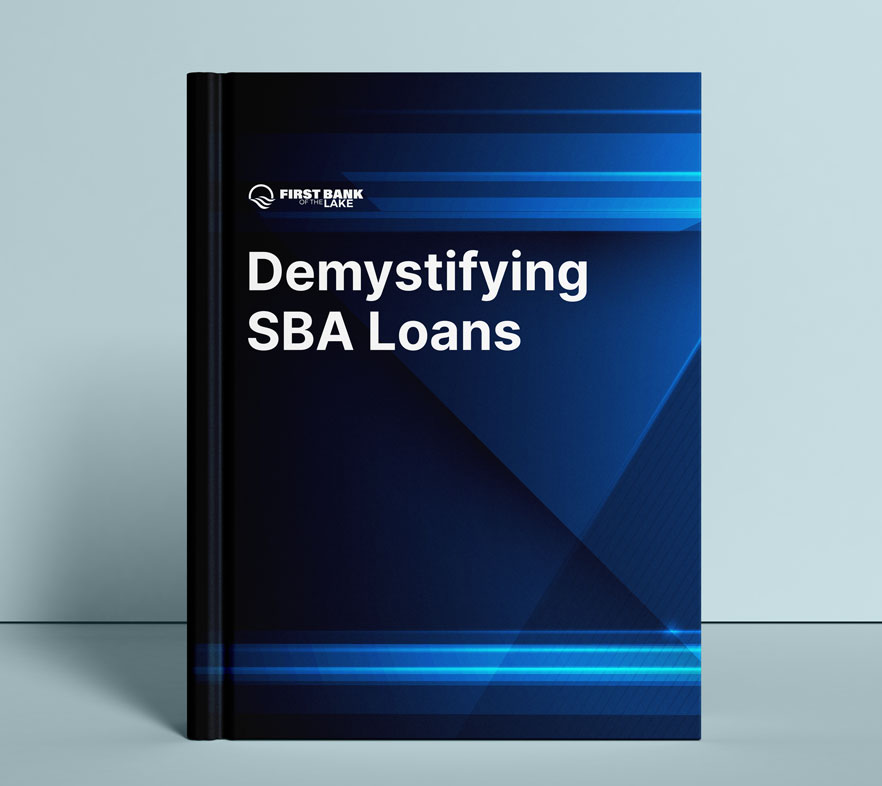Compound Interest Calculator
Home » Calculators »
Compound Interest Calculator
The compound interest calculator helps you understand how compounding affects your savings growth over time. It visually and numerically shows how your principal grows not only from the interest earned directly on your initial deposit but also from the interest earned on previously accumulated interest — a powerful concept known as "interest on interest."
Top 5 SBA franchise loan lender*
+$600 million franchise loans funded
+$1.9 billion in SBA loans since 2020
+2,000 SBA loans funded since 2020
See if You Pre-Qualify for an SBA Loan in 3 Minutes
Get the capital you need to fund your business

Fill in your info:

How to Use the Compound Interest Calculator
Step 1: Understanding Compound Interest
Compound interest means that you earn interest on your initial amount (principal) plus the interest that has been added to the account over time. The frequency of compounding (daily, monthly, yearly, etc.) affects how quickly your savings grows, and the more frequent the compounding, the more interest you will earn.
Step 2: Input Your Investment Amount
This is the initial sum of money you plan to deposit or invest. Enter the starting amount you’ve set aside for your savings or investment goals.
Step 3: Set the Interest Rate
Enter the annual interest rate you expect to earn, expressed as a percentage. This rate should reflect your account’s or investment’s annual yield. For example, enter “4” for 4% annual interest.
Step 4: Duration of Investment
Specify the number of years you plan to keep your money invested or saved. The longer the time, the larger the effect of compounding.
Step 5: Calculate and Analyze
Once all inputs are entered, the calculator will compute the future value of your investment, showing total amount accrued including interest.
By experimenting with this calculator, you can better understand how much your savings could grow over time through the powerful effect of compound interest, helping you make smarter financial decisions about saving and investing. Use this information to test “what-if” scenarios: For example, increasing monthly contributions, adding more years, or adjusting the interest rate to see how these factors influence your ending balance.
Compound Interest Calculator Results
The calculator results are shown in real time by adjusting the sliders or entering numbers. If you click on “View Report”, you can additionally see the returns, the APY percentage, and the results with different compounding terms (yearly, quarterly, monthly and daily).
Using a compound interest calculator can transform abstract numbers into a concrete vision of your financial future. For instance, if you start with an initial investment of $10,000 at a 5% annual interest rate, compounded monthly, and add $100 each month, the results are significant. After 20 years, your total contributions would be $34,000, but your investment could grow to over $70,000. This “interest on interest” effect is what makes early and consistent saving so powerful, turning small, regular contributions into substantial wealth over the long term.

Compound Interest Calculator Definitions
These are the definitions providing more information for each field with the compound interest calculator.
- Investment amount: The amount of your initial investment.
- Interest rate: The annual interest rate for your investment. The actual rate of return is largely dependent on the types of investments you select. The Standard & Poor’s 500® (S&P 500®) for the 10 years ending December 31, 2023, had an annual compounded rate of return of 15.20%, including reinvestment of dividends. From January 1, 1970 to December 31, 2023, the average annual compounded rate of return for the S&P 500®, including reinvestment of dividends, was approximately 10.90% (source: www.spglobal.com). Since 1970, the highest 12-month return was 61% (June 1982 through June 1983). The lowest 12-month return was -43% (March 2008 to March 2009). Savings accounts at a financial institution may pay as little as 0.25% APY or less but carry significantly lower risk of loss of principal balances. It is important to remember that these scenarios are hypothetical and that future rates of return can’t be predicted with certainty and that investments that pay higher rates of return are generally subject to higher risk and volatility. The actual rate of return on investments can vary widely over time, especially for long-term investments. This includes the potential loss of principle on your investment. It is not possible to invest directly in an index and the compounded rate of return noted above does not reflect sales charges and other fees that investment funds and/or investment companies may charge.
- Years: Number of years for this investment.
- Compound interest: Interest on an investment’s interest, plus previous interest. The more frequently this occurs, the sooner your accumulated interest will generate additional interest. You should check with your financial institution to find out how often interest is being compounded on your particular investment.
- Yearly APY: Annual percentage yield received if your investment is compounded yearly.
- Quarterly APY: Annual percentage yield received if your investment is compounded quarterly.
- Monthly APY: Annual percentage yield received if your investment is compounded monthly.
- Daily APY: Annual percentage yield received if your investment is compounded daily.
What is Compound Interest?
Compound interest is sometimes called the eighth wonder of the world, and for good reason. It is the process where you earn interest not only on your initial principal but also on the accumulated interest from previous periods. In simpler terms, your money starts making money for you. This creates a snowball effect that can dramatically accelerate the growth of your savings or investments over time.
Understanding how compounding works begins with a few key components. First, there’s the principal, which is the amount of money you start with—your initial investment or savings. Next, the interest rate determines how much your money will grow each year. This rate is usually expressed as a decimal, such as 0.05 for 5%. Compounding also depends on how frequently interest is added to your balance. This could happen annually, quarterly, monthly, or even daily. The more often interest is compounded, the faster your money can grow. Finally, the time your money remains invested plays a crucial role; the longer it stays untouched, the more pronounced the compounding effect becomes.
All of these elements come together in the compound interest formula: A = P(1 + r/n)^(nt). In this equation, “A” stands for the future value of your investment, “P” is your principal, “r” is the annual interest rate, “n” represents how many times interest is compounded per year, and “t” is the total number of years your money will be growing. This formula captures how your money builds upon itself with each compounding period, ultimately leading to much greater growth than with simple interest alone.
Let’s illustrate with an example. Suppose you invest $1,000 (your principal) in an account with a 5% annual interest rate.
- With simple interest, you would earn $50 each year ($1,000 x 0.05). After 20 years, you’d have your original $1,000 plus $1,000 in interest ($50 x 20), for a total of $2,000.
- ound interest compounded annually, in the first year, you earn $50. Your new principal becomes $1,050. In the second year, you earn 5% on $1,050, which is $52.50. Your principal is now $1,102.50. This process continues, and after 20 years, your investment would grow to approximately $2,653.
The difference of over $650 highlights the power of compounding. The more frequently interest is compounded, the faster your money grows, as you start earning interest on your interest even sooner. This is why it’s a fundamental concept for anyone looking to build long-term wealth.
Whether you’re growing your savings or borrowing for a big purchase, compound interest works the same way, it builds over time, either by adding to your earnings or increasing what you owe.
Compound Interest on Loans
Compound interest on a loan means you’re paying interest not just on the original amount you borrowed, but also on the interest that accumulates over time. In other words, as unpaid interest is added to your balance, the total amount you owe grows faster. This can make long-term loans more expensive if you only make minimum payments or let interest build up. However, by paying more than the minimum or making payments more frequently, you can reduce the compounding effect and save money in the long run.

What is Loan Amortization?
Loan amortization is the process of paying off a debt over time through regular, fixed payments. Each payment is structured to cover both the interest accrued on the loan and a portion of the principal balance. When you take out a loan, such as a mortgage or an auto loan, you agree to a repayment schedule. An amortization schedule is a table that details each payment, showing how much goes toward interest and how much goes toward reducing the principal. A loan amortization calculator can generate this schedule for you, providing a clear picture of your repayment journey.
Loan amortization is a systematic process where each payment you make is divided between paying off interest and reducing the loan principal. In the beginning, most of your payment goes toward interest because your outstanding balance is at its highest. As you continue making payments, the portion applied to interest decreases, and more of each payment goes toward reducing the principal. This gradual shift continues with each payment, and by the end of your loan term, nearly all of your payment is applied to the principal.
Consider a simple example: Suppose you take out a $10,000 loan at a 6% annual interest rate, to be paid back over three years with monthly payments. Using a loan payment calculator, you would find that your fixed monthly payment is about $304.22. For your first payment, the interest portion for the month is roughly $50 (calculated as $10,000 multiplied by 0.06, divided by 12). The remainder of your payment, about $254.22, goes toward reducing the principal. With your second payment, since the principal is now slightly less, the interest amount decreases a bit, allowing even more of your payment to be applied to the principal.
This cycle repeats for each payment until the loan is paid off. Over the full three years, you would end up paying a little over $10,950 in total, which includes about $952 in interest. An amortization schedule provides a detailed breakdown of each payment, showing exactly how much goes toward interest and how much reduces the principal. Understanding this process highlights why making even small extra payments toward the principal can reduce the total interest paid and help you pay off the loan more quickly. Using calculators and schedules to visualize this can be a powerful tool for anyone planning to borrow.

Moving Forward
Understanding compound interest and loan amortization equips you to make smarter financial choices. On one hand, you can harness the power of compounding to build your savings and investments. On the other, you can strategically manage your debts to minimize interest costs. Using online tools like a compound interest calculator and a loan amortization calculator allows you to visualize different scenarios and create a solid plan for achieving your financial goals, whether that’s saving for retirement or paying off a loan ahead of schedule.
The friendly financial experts at First Bank of the Lake offer SBA loans designed with the needs of our customers in mind. We financed more than $600 million in SBA loans over the past 12 months and are ranked as the 15th largest SBA lender in the United States in 2024. Since our founding in October 1985, we have offered outstanding customer service and the best financial options for their needs. Today, First Bank of the Lake offers loans for business enterprises across the United States. To learn more about our bank or about SBA loans, visit our website or check us out on Facebook or LinkedIn. Our friendly and knowledgeable staff members will be happy to discuss your loan options with you and to help you achieve the highest degree of success in your chosen industry. Please contact us at (888) 828-5689 to get your business loan questions answered today!
Check out our other financial calculators:
- Franchise loan calculator
- Business loan calculator
- SBA loan calculator
- SBA 7a loan calculator
- SBA 504 loan calculator
- Commercial Loan calculator
What Our Customers Say
Gave Me the Confidence I Needed
Huge thanks to Tammy and Brandi. Tammy was my first point of contact and gave me the confidence I needed since there isn't a local branch near where I live. Brandi has been answering ALL my questions since and has excellent follow up and has taken great care of me.
— Michele Houston
Genuinely Interested in Helping My Business Succeed
First Bank of the Lake was a tremendous help in securing a 504 small business loan for my company. Every staff member I interacted with was professional, friendly, and genuinely interested in helping my business succeed.
— Don Kamb
Exceptional Service
I cannot say enough positive things about my experience working with Eric as my SBA loan officer. From start to finish, he provided exceptional service and went above and beyond to ensure that every issue we encountered was resolved quickly and efficiently.
— Bryan Crowe
Real business owners. Real results.
Woof Gang Bakery SBA Loan Case Study
After years in HR, Kasia followed her passion for animals and, with a $345K SBA loan from First Bank of the Lake, quickly launched her Woof Gang Bakery & Grooming franchise — already nearing breakeven just months in.
Tint World SBA Loan Case Study
After losing his wife, a friend, and his life savings, Dan Billings reinvented his life with a Tint World franchise — and with guidance and an SBA loan from First Bank of the Lake, his business is thriving and he’s already eyeing a second location.
Lifetime Green Coatings SBA Loan Case Study
Father and son duo Barry and Parker Norfleet launched six Lifetime Green Coatings franchises with a $400K SBA loan from First Bank of the Lake — quickly setting up operations and nearly breaking even within just three months.
Download Free ePubs on Buying a Business and SBA Loans

Learn how we’ve made hundreds of franchise loans

Learn how to buy your own business from the experts

Learn how to get an SBA 7A loan and grow your business



